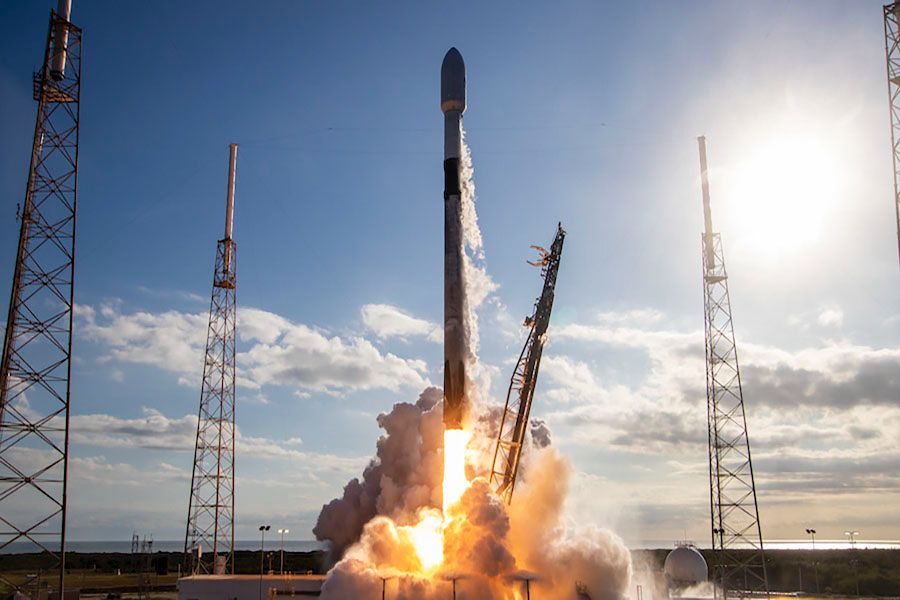
Florida: South Korea launched its first home-developed lunar orbiter on Thursday, becoming the seventh country to join the already competitive race to send spacecrafts to the moon. The satellite launched by SpaceX is taking a long, roundabout path to conserve fuel and will arrive in December. The launch was initially scheduled for July 27. However, it was delayed due to a maintenance issue with the SpaceX rocket. If the mission succeeds, South Korea will become the world’s seventh lunar explorer behind the United States, Russia, China, Japan, Israel and India.Also Read – All Skygazers Look Up! From Last Supermoon To Meteor Shower, THESE 4 Astronomical Events Just Cannot Be Missed This August
SpaceX’s KPLO Falcon 9 mission lifted off at 7:08 p.m. EDT from Pad 40 less than thirteen hours after the sunrise launch of a United Launch Alliance Atlas V from neighboring Pad 41 which occurred at 6:29 a.m. EDT. Also Read – NASA’s James Webb Telescope Unveils Images Of Mysterious Cartwheel Galaxy. See Colourful Cosmic Snaps
Watch Falcon 9 launch KPLO to orbit → https://t.co/ypqkncgNO9 https://t.co/xVSjw5a0TK
— SpaceX (@SpaceX) August 4, 2022
Also Read – James Webb Space Telescope Captures Stunning Image Of Jupiter
Danuri — Korean for “enjoy the moon” — is carrying six science instruments, including a camera for NASA. It’s designed to peer into the permanently shadowed, ice-filled craters at the lunar poles. NASA favors the lunar south pole for future astronaut outposts because of evidence of frozen water.
The $180 million mission — the country’s first step in lunar exploration — features a boxy, solar-powered satellite designed to skim just 62 miles (100 kilometers) above the lunar surface. Scientists expect to collect geologic and other data for at least a year from this low polar orbit.
It is South Korea’s second shot at space in six weeks. In June, South Korea successfully launched a package of satellites into orbit around Earth for the first time using its own rocket. The first try last fall fizzled, with the test satellite failing to reach orbit.
And in May, South Korea joined a NASA-led coalition to explore the moon with astronauts in the coming years and decades. NASA is targeting the end of this month for the first launch in its Artemis program. The goal is to send an empty crew capsule around the moon and back to test the systems before a crew climbs aboard in two years.
South Korea plans to land its own spacecraft on the moon — a robotic probe — by 2030 or so.
“Danuri is just the beginning,” Sang-Ryool Lee, president of the Korea Aerospace Research Institute, said in the SpaceX launch webcast.
SpaceX’s Falcon 9 rocket carrying Danuri took off from Cape Canaveral close to sunset. The first-stage booster — making its sixth flight — landed on an ocean platform several minutes later for further recycling.
Korea Pathfinder Lunar Orbiter (KPLO), also known as Danuri, “will be the first step for ensuring and verifying [South Korea’s] capability of space exploration,” officials with the Korea Aerospace Research Institute (KARI), which is managing the mission, said in a statement.
It was the third spaceshot of the day from the U.S. United Launch Alliance kicked things off at sunrise in Florida, launching an Atlas V rocket with an infrared missile-detection satellite for the U.S. Space Force. Then Jeff Bezos’ Blue Origin rocket company sent six passengers on a quick ride to space from West Texas.
Across the world, the company Rocket Lab launched a small classified satellite from New Zealand for the U.S. National Reconnaissance Office.
(With inputs from agencies)
Stay connected with us on social media platform for instant update click here to join our Twitter, & Facebook
We are now on Telegram. Click here to join our channel (@TechiUpdate) and stay updated with the latest Technology headlines.
For all the latest For Top Stories News Click Here
